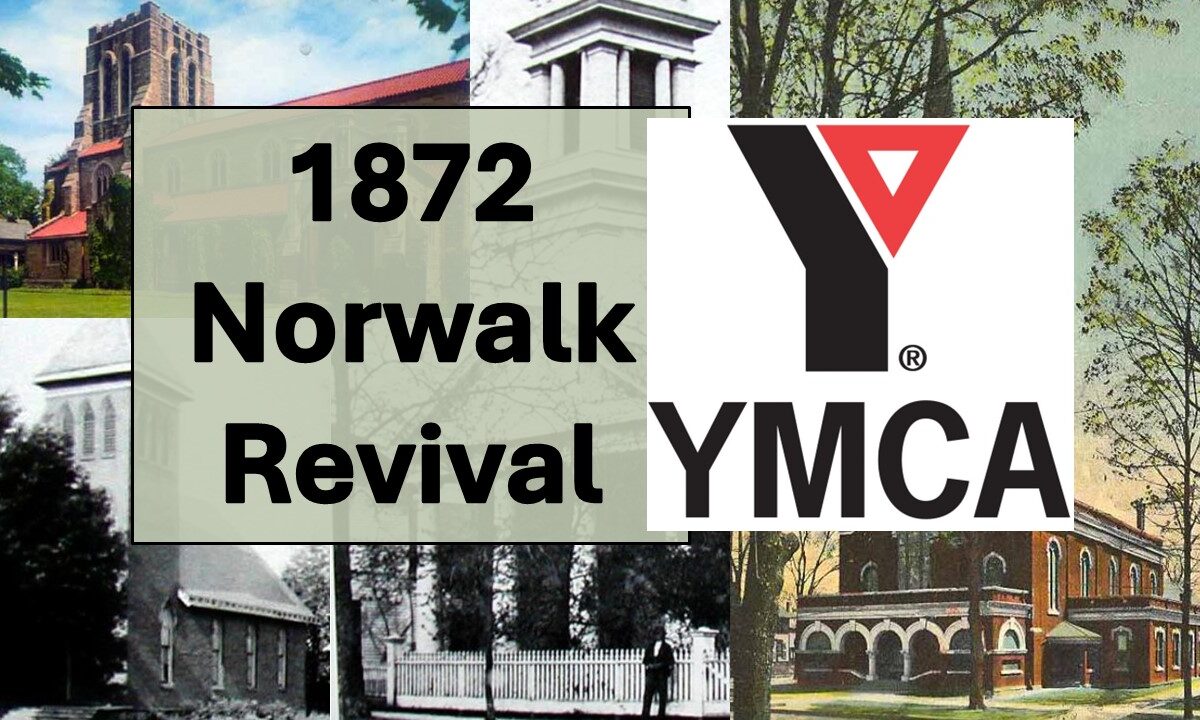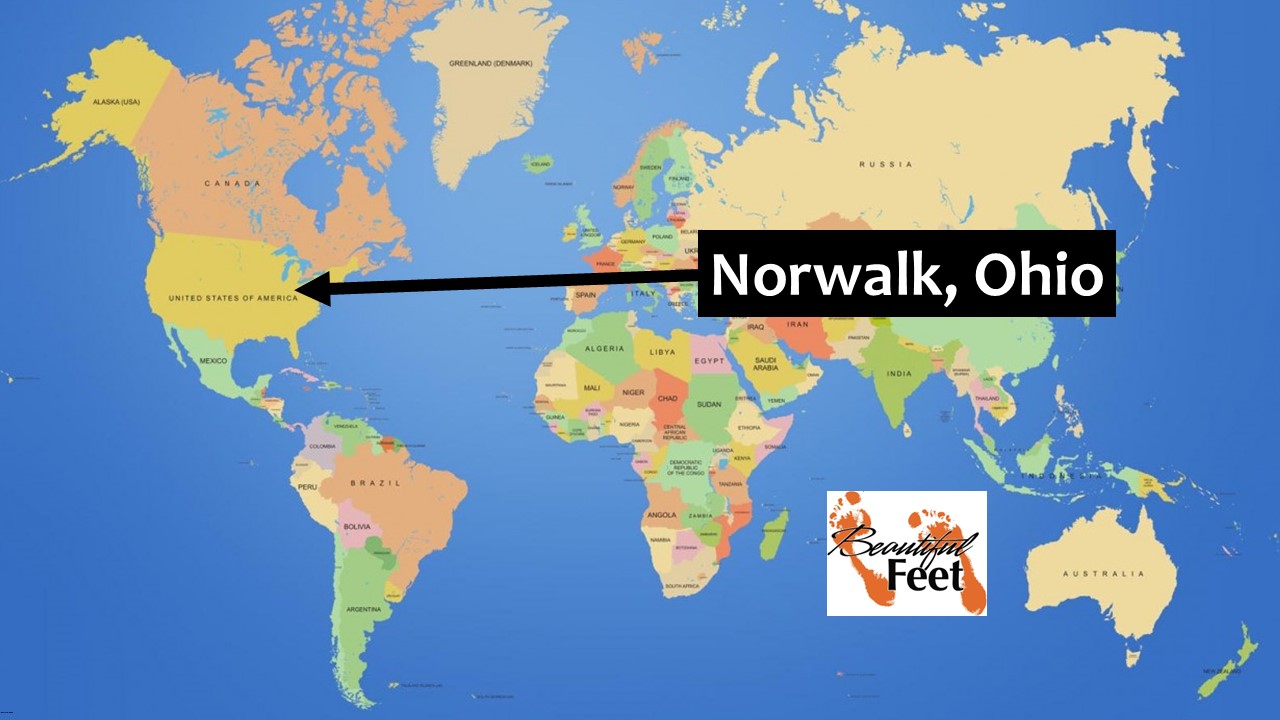
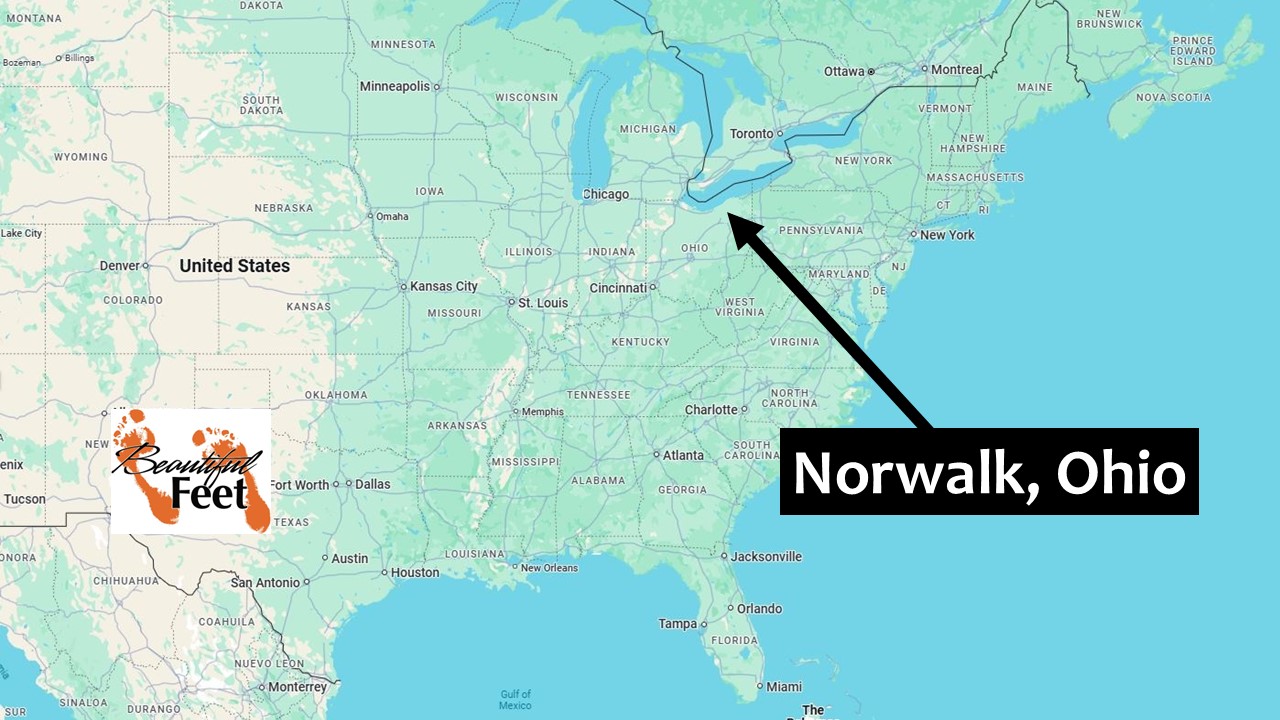
Background
Today’s Young Men’s Christian Association (YMCA) looks nothing like it did during the mid-1800s, when its strong evangelical focus sent young men out to be witnesses for Christ. This post shows how extensive the “Y” was during that era, and how it worked in conjunction with local churches.
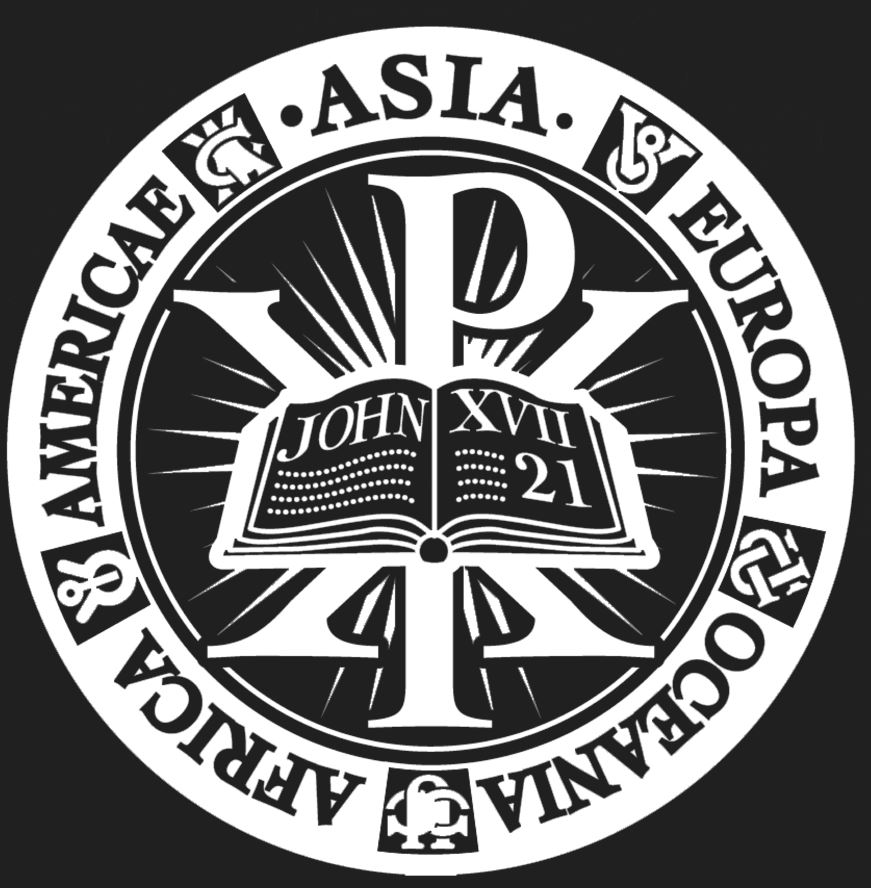
YMCA’s logos
YMCA Logo
The first logos of the YMCA included John 17:21, which described the YMCA’s missional focus on uniting the world with Jesus as its savior.
I pray that they will all be one, just as you and I are one—as you are in me, Father, and I am in you. And may they be in us so that the world will believe you sent me (John 17:21 NLT).
Extraordinary Prayer
During the winter of 1872, the churches of Norwalk, Ohio, united for prayer meetings, creating a previously unseen unity among them. This unity led to organizing joint protracted revival meetings.
These prayer meetings and subsequent steps to enhance unity included cooperation among the pastors of the five evangelical churches in town:
1. First Baptist Church—Rev. I. N. Carman
2. St. Paul’s Episcopal Church—Rev. H. H. Morrell
3. Methodist Episcopal Church—Pastor Unknown
4. First Presbyterian Church— H. H. Rice
5. First Congregational Church— C. E. Wright
Invitation to the Young Men’s Christian Association (YMCA)
of Cleveland
In August of 1872, initial steps were taken to establish a YMCA in Norwalk. Acting on these foundational steps, a team from the Cleveland, Ohio, YMCA was invited to conduct a meeting in Norwalk. This meeting was held on October 27, 1872, in Whittlesey Hall. The meeting was described as “peculiarly interesting and powerful.”
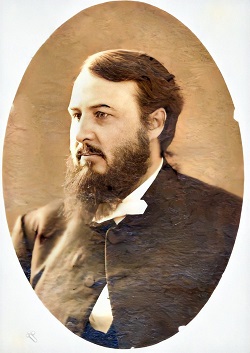
Evangelist H. H. Wells
This led to the establishment of the Norwalk YMCA in early November. Subsequently, the Cleveland team was invited to conduct meetings on Saturday, November 24.
The Cleveland branch agreed to return, and while they were at the train station on their way to Norwalk, they encountered the Presbyterian evangelist, Horatio H. Wells, who they encouraged to accompany them to Norwalk.
At 2 P. M. on November 24, a large assembly was present at Whittlesey Hall. For two hours, the men from Cleveland, as well as those from Norwalk, addressed the crowd, with H. H. Wells also participating.
At the close of the meeting, an invitation was extended for any who wanted prayer for salvation, and three responded by standing. This was the first fruits of the Norwalk Revival.

Whittlesey Hall was the third floor of this building
on the corner of Main and Whittlesey Ave.
The third floor was removed after damage from a storm.
Evening Meeting at the Presbyterian Church
There was such unity and excitement generated during the afternoon meeting on November 24 that it was decided to hold another meeting that same evening at the Presbyterian Church. Prior to the start, the church was already filled, with anticipation building among the attendees.
The final speaker that night was the evangelist H. H. Wells. At the close of his sermon, nine committed to follow Jesus Christ as their Lord and Savior.
Decision for Continuation of Meetings
With all five of the pastors from Norwalk’s churches present at the evening service on November 24, and with unity among them already in place, the decision was made to continue services the following day at the Methodist Episcopal Church at 10 A.M., and then at the Congregational Church that evening.
The chronicler of this revival, A. W. Taylor, wrote that:
Thus closed that eventful day, the 24th of November, which was the beginning of a work of grace scarcely equaled in modern times.
These meetings set in motion The Great Norwalk Revival, resulting in well over 1,500 souls saved and many backslidden people returning to their first love.
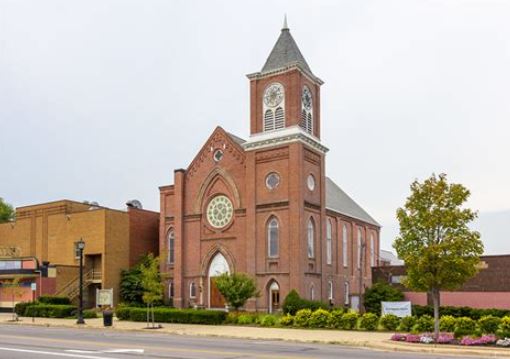
First Baptist Church – building from 1872 is still in use today
Schedule for the Revival Meetings
The meetings in Norwalk ran Monday through Friday, at 10 A.M. and 7:30 P.M. There was a prayer meeting held in each respective church at 6 P. M. on Thursdays and Sundays. In addition, there were afternoon new convert meetings at 4:30 P.M., prior to the evening service. On some Sunday afternoons, the YMCA would conduct evangelistic meetings at the Whittlesey Hall at 2 P.M.
Service Schedule
The typical service schedule included singing hymns for 30 minutes, reading the Bible, and a sermon. At the conclusion of the sermon, people who wanted to make a commitment to Christ were invited to stand and ask for prayer for their salvation.
Some who stood were those who had grown cold in their relationship with God. When a hymn was sung, those standing were invited to come to the front and sit in seats next to the pulpit. After further prayer and words of exhortation, these individuals were ushered to a side room where ministers provided further counsel on their next steps in following Jesus.
Testimony Services
On some days, the services were used exclusively for sharing testimonies by those who were newly converted, or by those who had grown spiritually cold and those who “had a name” as being a Christian, but were spiritually dead. Others publicly acknowledged their faults to each other and before the world, enacting reconciliation. Some stood and asked for prayer for challenges they were facing in life.
On some evenings, following a service, an additional hour would be committed to prayer.
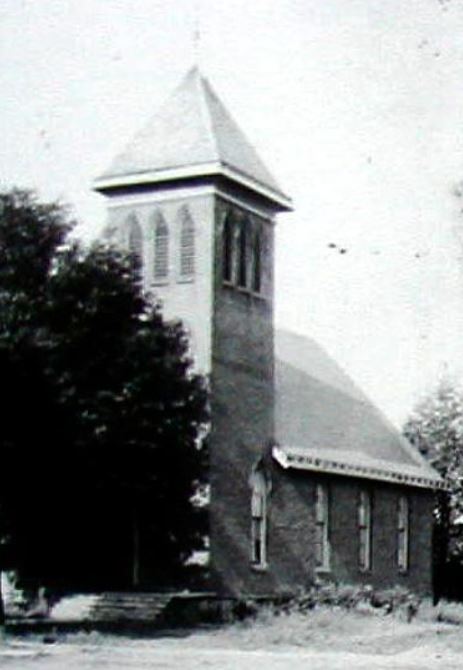
Congregational Church
Prayer Carried the Revival
In addition to the weekly prayer meetings on Thursdays and Sunday nights at the five churches, prayer meetings were also held in homes, offices, workshops, and other places of business. Prayers were often offered for specific individuals, with their names spoken out loud in public.
Emotions
The meetings were described as orderly, but when 20, 50, or even 100 people stood on different nights to commit to following Jesus, the emotions of those in attendance would often overflow with tremendous joy, impossible to restrain.
The Presence of God
On some evenings, the presence of God was said to be tangible.
The almost death-like stillness was painful, and every heart appeared to be deeply impressed with the visible manifestations of the Eternal Spirit.
On Thursday, November 28, during the evening service, the presence of God was so real that it was described as follows:
This meeting was one of more than usual power and solemnity, resulting, as it is confidently hoped, in numerous conversions and the conviction of some of the most skeptical and obstinate men in the community.
Every Christian heart was filled with joy at these wonderful triumphs of the cross, and tears of gratitude commingled with the tears of penitents, as all bowed before the common Savior.
H. H. Wells made the following comment about this evening:
God’s presence is so manifestly here that I hardly dare to speak, lest I may offend, or in some way grieve Him away.
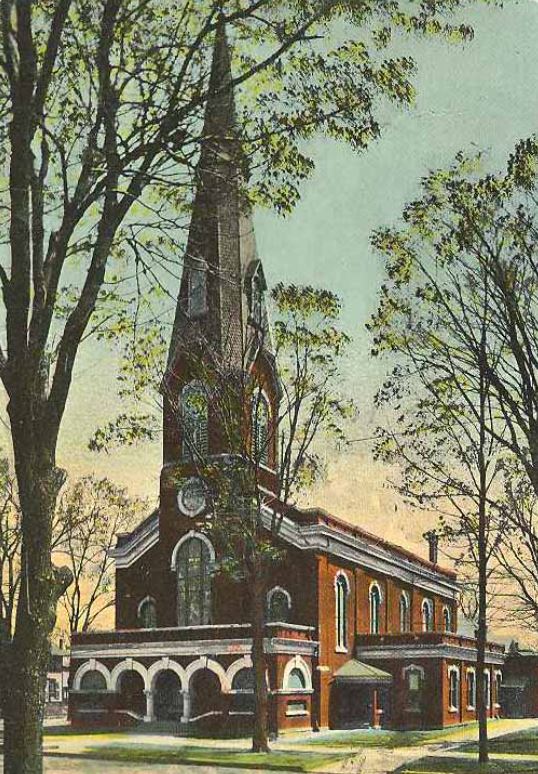
Presbyterian Church
Friday, Nov. 29: All Evening Services Moved to the Presbyterian Church
The meetings had been rotating among the five churches, but on November 29, the five pastors unanimously agreed to conduct all evening services at the Presbyterian Church. The other churches, too small to accommodate the crowds, required the turning away of hundreds. The Presbyterian Church, with extra chairs, seated nearly one thousand persons, but it was still too small to seat all who sought admission.
Revival Was the Subject of Conversation
The population of Norwalk at this time was around 4,500. With about one-quarter of the town’s inhabitants being present during the services every day, the town and region was saturated with awareness of what God was doing.
The community was abuzz with the topic of “the revival.” Wherever one went, the conversation was about what God was doing in the town. People in the country and surrounding towns were eager to hear about what was taking place.
Evangelistic Work Spread Outside the Churches
This inquisitiveness about the revival opened the doors for many who had been previously hesitant to talk about spiritual things in public. This community conversation caused the streets to be filled with missionaries.
These “missionaries,” though only a few days into their Christian life, would be found pleading with their friends, sisters, brothers, parents, husbands, wives, etc., to turn to Christ and away from sin.
The children were said to have had a dramatic impact on the aged, as they shared the Gospel openly.
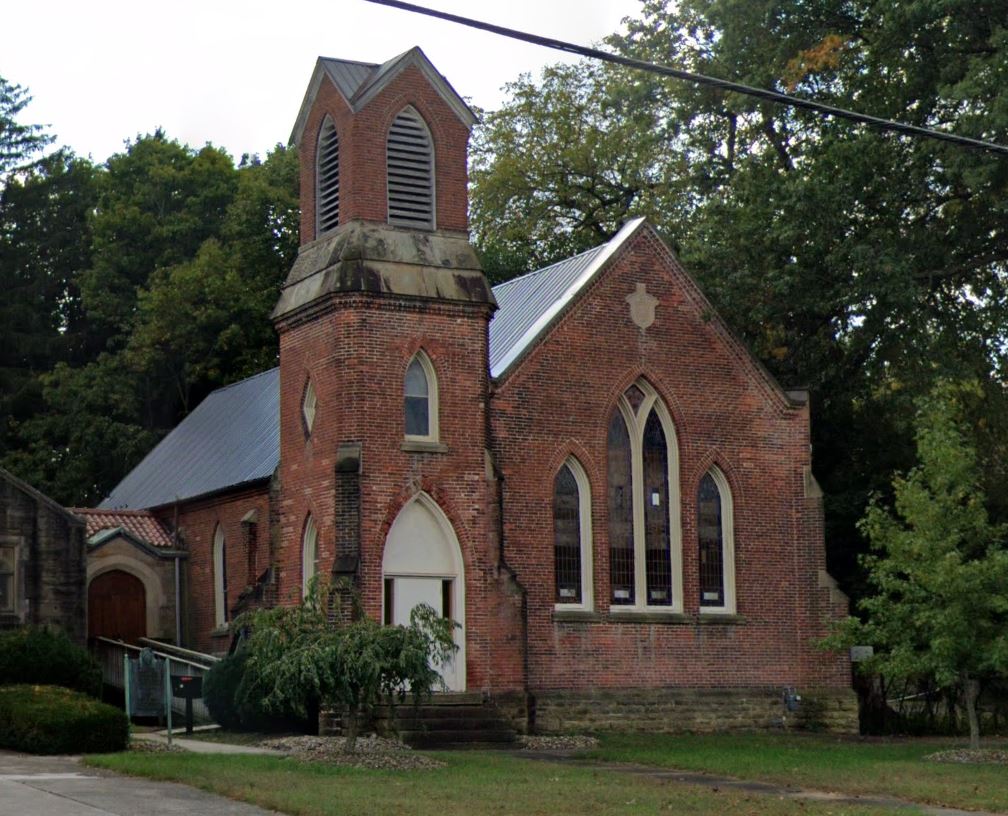
St. Paul’s Episcopal Church: 87 W. Main St.
Pray for Us!
The five churches were flooded with requests for prayer for the salvation of their family members, classmates, co-workers, and others. These prayer requests were read during services, and united prayers were offered in response.
Come Over and Help Us
Prayer requests also flooded in from neighboring communities, often signed by pastors, requesting the believers in Norwalk to pray for them, that God would send them the blessing Norwalk was currently experiencing.
Start of the Second Week
At the beginning of the second week, the meetings showed no evidence of slowing down. On Sunday morning, December 1, the congregations assembled in their respective churches, reflecting solemnly on the awe of God in their midst.
That afternoon, at 2 P.M., the YMCA held another evangelistic meeting at Whittlesey Hall, the largest ever assembled in the hall for any purpose. A significant number committed their lives to Christ at the close of the service.
Prayer meetings at the respective churches were held at 6 P.M., followed by the evening service at the Presbyterian Church at 7 P.M.
All seats were occupied, including the chairs placed in the aisles and the space in front of the pulpit. Even standing room was filled to capacity, resulting in many people unable to enter the building.
The choirs from the five churches contributed greatly to the singing of the hymns, drawing the congregation into heart-felt worship.
The meeting concluded late at night, with many unwilling to leave a place that felt so sacred and filled with the presence of God.
During this evening’s meeting, not less than 20 men, most of them prominent in the community, made a profession of their faith in Christ.
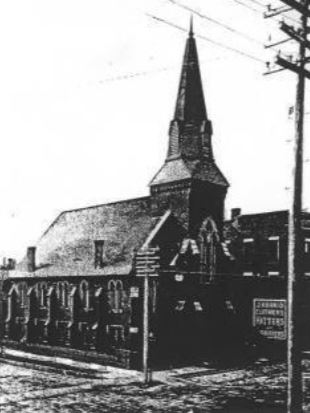
Methodist church, located on the corner of W. Main and Benedict Ave.
Departure of H. H. Wells
On Friday morning, December 6, H. H. Wells conducted his final meeting before going to his previously scheduled engagements in another town. The five pastors, believing God was not yet finished, agreed to continue the daily meetings, with the pastors rotating the preaching duties.
That night, even with the absence of the notable and honored evangelist, H. H. Wells, the attendance was the largest ever assembled in Norwalk. The following morning’s meeting also saw a larger turnout than any preceding it. For weeks to come, attendance continued to build, as did the numbers of converts.
Friday, December 13
At the close of the third week, every segment of society had been touched, resulting in hundreds of conversions. The entire community was engrossed in the revival and the life-transformations they witnessed in themselves and others.
Business Men’s Prayer Meeting
Around Christmas 1872, a Business Men’s Prayer Meeting was established. The meetings included singing, reading the Scriptures, prayer, and short sermons. They met daily at 9 A.M. in one of the rooms of the Young Men’s Christian Association.
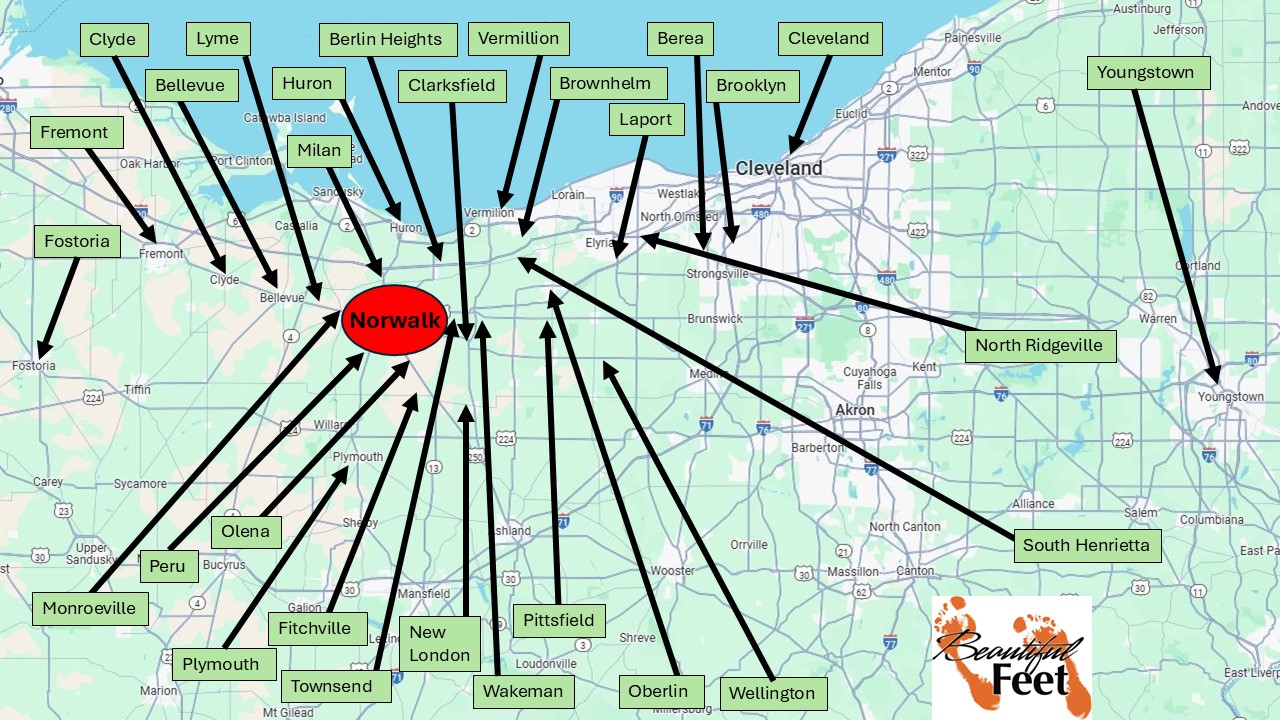
Some of the locations where YMCA teams
and others from Norwalk traveled to conduct evangelistic ministry, visiting some locations multiple times.
Evangelistic Outreaches from the YMCA
Throughout the weeks, the YMCA was consistently working in Norwalk and surrounding communities. Teams of young men from Norwalk, often accompanied by the town’s pastors, visited regional towns to share the Gospel and recount what Norwalk was experiencing.
Week 10
After ten weeks, the revival was still moving forward with unabated interest.
Since the little band of earnest Christian young men from Cleveland held a religious meeting in Whittlesey Hall, in this city, the initial work that inaugurated the most powerful and extensive religious revival ever known in the history of the country.
With the eleventh week of revival, the spiritual fervor continued to increase. Meetings were more numerous and better attended than in previous weeks. Additionally, powerful reports were returning from the YMCA ministry teams sent to surrounding communities, with conversions numbering over 500!
Thirteen Weeks of Unabated Revival
The chronicler of this revival, A. W. Taylor, sent his work to the publisher at the conclusion of the thirteenth week of the revival. This was by no means an indicator that the revival had ended, as many souls continued to be saved. For instance, on a Sunday night in mid-February 1873, fifty people committed to following Jesus.
Further Research Needed
This revival warrants further research to uncover its duration and long-lasting effects.
Source
► The Great Revival at Norwalk, Ohio by Arthur Wood Taylor
Return to List of Revival Stories
Chet & Phyllis Swearingen:
Office: (260) 920-8248
romans1015@outlook.com
Beautiful Feet
P.O. Box 915
Auburn, IN 46706

